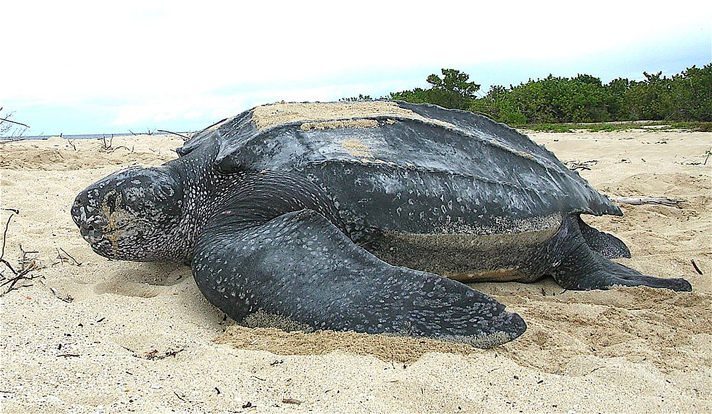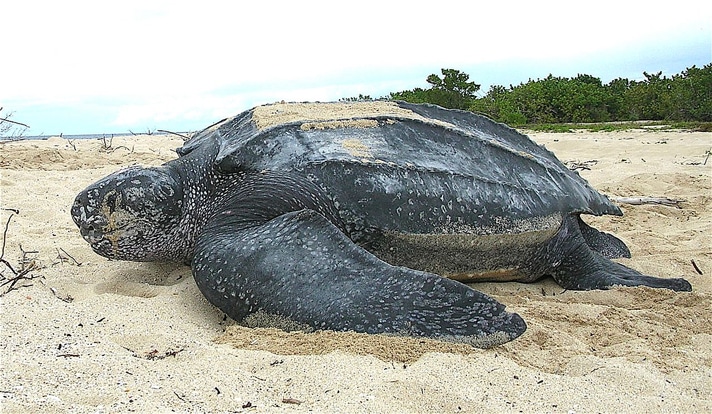The leatherback sea turtle is currently listed as endangered.
After a request from an east coast fishing group, the National Oceanic and Atmospheric Administration (NOAA) is looking into listing leatherback sea turtles (Dermochelys coriacea) as threatened, but not endangered, a classification that would still keep the reptile protected under federal law.

USFWS
NOAA will collect data and comments on the reptile until February 5 to determine whether to downgrade the listing of the leatherback sea turtle from endangered to threatened.
The Blue Water Fishermen's Association, based out of New Jersey, petitioned NOAA to change the listing in part to generate new research with regard to the population of the reptiles. This data is often used when the government creates fishing regulations, and the association thinks the existing data may be outdated.
Want To Learn More?
Kennedy Brothers Rescue Leatherback Sea Turtle, Get Investigated By NOAA
Leatherback Sea Turtles Get Sanctuary On The U.S. West Coast
"I get a little frustrated in the fact that they are making regulations without scientific data in front of them," Ernie Panacek, a past president of the organization told ABC News. "The more turtles there are, the more interactions you are bound to have with them."
The leatherback sea turtle is the largest sea turtle species. Its listing as endangered is older than the Endangered Species Act of 1973.
NOAA will collect data and comments on the reptile until February 5.
The leatherback sea turtle is the largest turtle in the world and can grow to 2,000 pounds, though 1,000 pounds is more common. It is known for its leathery skin rather than a hard carapace like other turtles. They have been recorded diving more than 3,900 feet and feed primarily on jellyfish.



